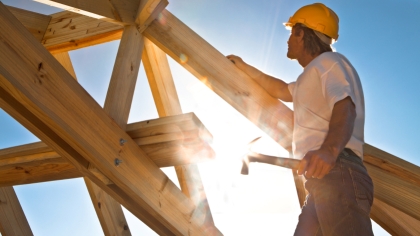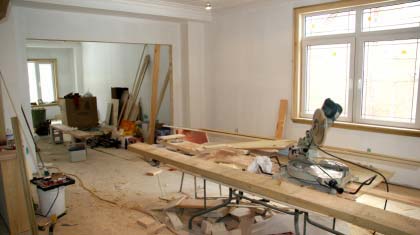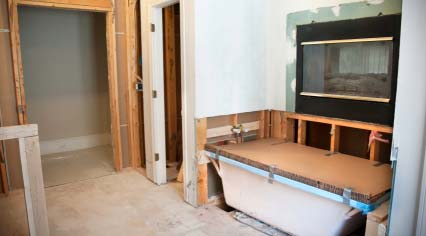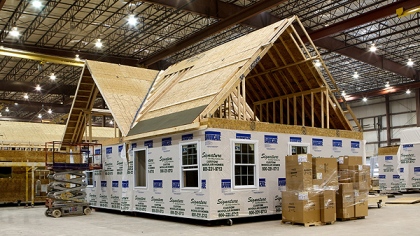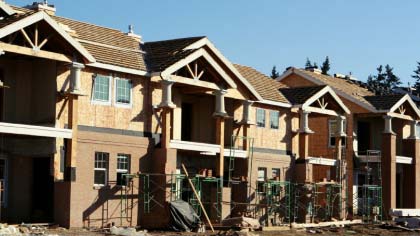Construction Loan Center
Choosing the Right Construction Lender to Build Your Home

You own a piece of land or have an eye on one that you intend to buy and build your dream home on. Or maybe an older house in an up and coming neighborhood that needs a total remodel.
Where do you start?
You need a lot of help and advice from many professionals, including but limited to a competent real estate agent, an architect, a builder and last but not least a loan officer who is well versed in the nuances of construction loans.
A real estate agent can advise you on the minimum and maximum size and standard of construction need to maximize the effectiveness of your investment.
Overbuilding or under building in a neighborhood can drastically impact the value of your future home so getting the size and standard of construction is significant.
Once you’ve established the above criteria, you need to consult with your architect and contractor to develop the overall cost of the project. It is essential to pay a lot of attention to detail at this stage as a lot of factors are involved in determining the final cost of construction.
How Do Construction Loans Work?
A standalone construction loan will typically provide financing of the soft cost and hard cost of construction. Unlike a purchase money or refinance loans a construction loan will disburse funds in stages as each stage of development is completed and inspected by both local authorities’ and the lender’s inspectors.
These are typically short-term (6-18 months), interest-only loans and interest is charged on the amount dispersed on monthly bases. Some lenders, particularly hard money construction lenders, will fund the entire loan amount into an escrow account and disburse fund from there, in which case interest is charged monthly on the whole loan amount.
The problem with this type of loan is that you are stuck with payments on the existing financing of your property, the new construction loan as well as your current housing which you may not qualify for and even if you do cause a real burden on your cash flow.
The above factors limited the possibility of building one’s own dream home to the very rich and condemned the rest of us to settle with buying a tract home.
About two decades ago some lenders came up with the idea of an all-inclusive loan that solved the problem. The solution was a simple; construction to permanent loan. Though it took some time for this to become popular and widely accepted, it is now available from almost all construction lenders.
How Do Construction to Permanent Loans Work?
Here is how the dilemma of quaffing for a construction loan was solved.
Construction to permanent loan wraps the purchase or refinance of the property, the soft costs and hard costs of construction, closing costs, interest reserve, contingency reserve and the final take out loan all in one.
At closing the loan proceeds pay for the purchase or refinance of the existing loan and the remainder is dispersed as each step of the construction is completed. Construction lenders call these disbursements draws.
Interest is charged on the loan amount drawn on monthly basis, but charged to the interest reserve account as opposed to you making payments. The contingency reserve pays for unexpected cost overruns.
Once the construction is complete and, final permits are issued the last draw is paid out and the permanent loan kicks in.
Construction Loan Amount
Talking to a construction lender from day one to determine the construction loan that you are qualified is going to be the bases of your decision-making process since it will provide the guidelines for financing your project.
Figuring out the home construction loan amount or is a good deal more complicated than a purchase loan. Here’s a practical and simple use construction loan calculator that will help you determine the loan amount you will need to realize your project.
How to Qualify for a Construction Loan
Since your project’s monthly payments are charged to the interest reserve account, and you are only responsible for your current housing expense the lender qualifies you on the basis of the future permanent loan.
Having so many components built into the construction to permanent loan raises a question; will the loan amount allowed for construction be sufficient to cover the actual cost of construction?
The answer is most definitely yes! A construction loan is made on the basis of both the Future Value Appraisal and the Cost of Construction. If you pay attention to the advice received from all the professionals involved and keep an eye on expenses, the future value of your project should exceed the loan amount required.

